Buddhi Narayan Shrestha
Border expert
And
Former board member, Institute of Foreign Affairs (IFA), Nepal
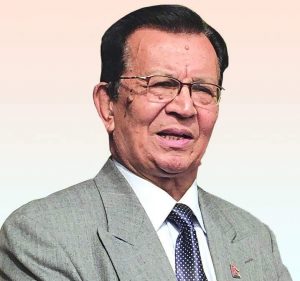
Frontier land is that portion of the territory of any country which lies close along the borderline of another country. Lord Curzon of Kedles Viceroy of India (1898-1905) has said “Frontiers are indeed the razor’s edge on which hang suspended the modern issues of war or peace, of life or death to nation. It indicates that border is a sensitive element.
Sometimes, there may be disputes between two neighboring countries, regarding the ownership of some of the frontier lands. For example, Nepal and India have the dispute on Lipulek-Kalapani-Limpiyadhura.
This scribe intends to float a thought whether there is a possibility to swap the land of Limpiyadhura area with India.
According to the international boundary principle, there are four alternate steps to resolve the frontier land dispute. First, dialogue, discussion, understanding and negotiation. Second, mediation/arbitration. Third, UN security council geo-informatics division. Fourth, international court of justice. Dialogue and negotiation are regarded as the best means of dispute resolution, in a win-win situation.
International practice:
It is tried here to describe the negotiation process. There are three items of negotiation: swapping of lands, to provide on lease and compensation. Under the negotiations, mostly, swapping of lands is prevalent. For example, Netherlands and Belgium swapped the lands of Meuse area in 2016, and Netherlands was benefitted 25 Acres of land. Servia and Kosovo exchanged Medveja and Presevo frontier in 1992. Finland and Sweden swapped Markat area islands in 2012.
Nepal and China exchanged portion of frontiers during the border demarcation in 1961-62.
Nepal provided 1836 square kilometer of frontier lands to Chinese side. In exchange, China gave 2139 sq. km to Nepal. With this effect, those, whose lands were demarcated on the other frontier, they had been given to choose the nationality within one year period. Those, who retained their citizenship as it is and if their lands fall on the other nation, they were provided monetary compensation evaluating jointly by the Nepali and Chinese local authorities.
_________________________________________________________________________________________________________________________
“To swap the lands, the first preference should be swapping of Limpiyadhura area of Nepal with the 23 km width Chicken neck portion of West Bengal Indian land, located between Nepal and Bangladesh. Lipulek, Nabidang, Gunji, Navi, Kuti, Limpiyadhura (north of Lipu river) having 310 square kilometre of Nepali frontier could be exchanged with the Indian land equal in area, located east of Kakarbhitta, Chandragadhi and Kichakbadh of Nepal to Banglabandh Zero Point and Titaliya to touch Bangladesh border. Nepal should retain 62 sq km area south of Lipu River from Lipulek pass to Kalapani near Gunji.”
_________________________________________________________________________________________________________________________________
Nepal and India also have exchanged lands. British resident J Manners Smith sent a request letter to Prime Minister Chandra Shumsher on May 3, 1916 to provide Nepali land to construct Sharada barrage canal project in an exchange basis. There were many correspondences and discussions in due course. Finally, a proposal was made on October 21, 1920 on this matter. Nepal government transferred 4130 acres of land at Sharada barrage area to India and Nepal received 4094 acres of Manpura Tapara, Rajapur of Bardiya district and forest area of Dang near Koilabas.
Bhutan-China:
Bhutanese King Jigme Khesar Namgyel Wangchuck had eight-day official visit to India from November 3-10, 2023. Before King’s visit to India, there was the 25 th round of talk between Bhutan and China to settle the boundary issue. According to Bhutan, China and Bhutan have a dispute in two sectors of the border, one in Pasamlung-Jakarlung in north-central area, and second in the west Doklam. During the talk, China proposed territory swap as a solution for the dispute. It was proposed the disputed area of Jakarlung and Pasamlung to be swapped with the Doklam plateau. The deal would have benefited Bhutan by giving it the larger chunk of land with an area of 495 sq km. Instead, China would get only 269 sq km of Doklam plateau. Swapping was a Chinese proposal in resolving its tensions with Bhutan.
But this was something that Bhutan rejected, given India’s concern.
It was a big worry for India, as the Doklam swap would have given China access to the strategically sensitive chicken neck of the Siliguri corridor.
The Doklam plateau, south of the tri-junction among Bhutan, China and India, is where the Indian military, on behalf of Bhutan, was engaged in a standoff with the Chinese forces in 2017 to prevent them from encroaching upon the disputed territory. The standoff ended after over 73 days when both New Delhi and Beijing announced the withdrawal of their forces. It indicates that swapping of frontiers is a means to settle the boundary dispute between two countries.
Bangladeshi model:
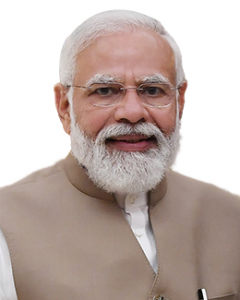
Indian Prime Minister Narendra Modi visited Bangladesh on June 6, 2015. During his visit, an agreement was made to swap the land to each other. Under the agreement, Bangladesh transferred 51 enclaves to India. Its area was 3,000 Acres with 16,000 Bangladeshi inhabitants. In exchange, India provided to Bangladesh 111 enclaves having 3,500 Acres, inhabited by 34,000 Indians. People living in the enclaves had been allowed to choose to live in India or Bangladesh with the option of being granted citizenship in the newly designated frontiers and the enclaves would effectively cease to exist.
After the agreement, Indian Prime Minister Modi compared the swapping agreement to the dismantling of another Berlin Wall. Bangladeshi Prime Minister Sheikh Hasina said, sixty- eight years old frontier human benevolence issue has been resolved peacefully. West Bengal Chief Minister Mamata Banerjee expressed “I am dignified to be a witness in this historic agreement. It is to be noted that India and Bangladesh had done homework rigorously for years to exchange the enclaves. To materialize the swapping, India did 100 th amendment in the constitution on May 15, 2015.
Nepal-India swapping of lands:
Nepal-India frontiers may be swapped each other to settle the border issue in accordance with Bangladeshi model. Lipulek-Kalapani-Limpiyadhura frontier of Nepal (372 sq km) has been encroached and occupied by India since 1962. They have established para-military force and Indo-Tibetan border post, after India-China border war. Historical maps and documents depict that this area belongs to Nepal. But India is not willing to go back from this area. The Indians have intensified activities in the Nepali soil occupied by Indians demonstrating their imperialistic and hegemonic character against the neighboring country.
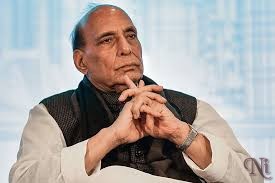
There may be number of reasons that India may not leave that frontier. First, India constructed the road all the way from Pithoragadh to Gunji, Nabidang and Lipulek pass, up to Chinese frontier. Indian defense minister Rajnath Singh inaugurated 80 km long road virtually on May 8, 2020. It is pity Nepal did not protest mentioning that it is beyond the international norms to make constructions in the disputed area unilaterally.
Second, Indian Prime Minister Narendra Modi visited Gunji in the Byas Rural Municipality of the Darchula District on October 12, 2023. Gunji is a Nepali village in the Kalapani territory encroached by India. Modi offered prayers at the Parvati Kunda near Gunji and paid far off homage of Adikailash located at Chinese frontier. It was along with a planned interaction program with local residents from Pithoragarh and Gunji. This visit raises questions as to why Modi visited this disputed area violating the diplomatic norms. The then Indian Prime Minister Manmohan Singh had visited Arunachal Pradesh on October 13, 2009 the disputed area between China and India. At that time, China was deeply upset and pleaded that India violated the diplomatic standard, visiting disputed territory without informing China. Nepal could not send objection letter to India regarding Modi’s visit to Gunji, as China had done to India.
Third, India published a new map on November 4, 2019 incorporating the Limpiyadhura- Kalapani-Lipulek area of Nepal. Nepal sent five diplomatic notes to India to talk on this issue.
But India ignored and did not respond. Nepal did not venture to step forward for international help.
Fourth, Nepal published Pointed Map (Chuche Naksa) on 20 May 2020. India ignored and had no effect on them. Due to political weakness, Nepal forgot to send it in the United Nations map archive to materialize the international recognition.
Fifth, China did not include Nepal’s new Pointed Map (Chuche Naksa) while publishing the latest standard national map of China on August 28, 2023. It has encouraged India to create strength to continue to encroach our Limpiyadhura frontier. But Nepal’s blunt diplomacy was not able to send a memo with new map to China.
Sixth, while prime minister Pushpa Kamal Dahal visited India on May 31, 2023, he could not raise the issue of Limpiyadhura. This was a blunder in relation to protect the territorial integrity of Nepal.
Seventh, Dahal had visited China on September 23, 2023. He was not able to spell on the Chuche Map of Nepal which was not included in the new map of China. Even when Nepal’s territorial integrity, national sovereignty and indivisibility have been challenged, Nepalese authorities are unable to speak.
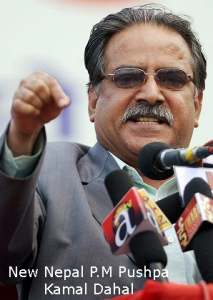
Eighth, Nepal government was reluctant to present a copy of Chuche Naksa to the Untied Nations Secretary General Antonio Guterres while he visited Nepal from October 29, 2023.
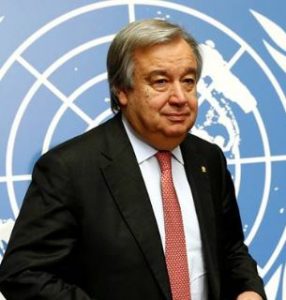
Had it been given to him as a gift, the territorial integrity of Nepal through Chuche Naksa would spread all over the world. Geo-informatics Division of the UN has an archive of collection of maps of the various countries of the UN member nations. Nepal missed this opportunity to strengthen territorial integrity.
Ninth, Nepal could not enumerate the Nepali citizens dwelling at Gunji, Nabi and Kuti due to Indian obstruction during the national population census conducted in October-November 2021. But with the help of satellite/google images, it could be counted number of houses of that area and total number of people be enumerated virtually. It is notable that 1961 population census had enumerated the people of that area.
Tenth, general election was held on 20 November 2022 to elect the 275 members of the House of Representatives. But the government could not initiate to enroll the people of Gunji area in the voter list.
However, they were enrolled as the voters in the first general election- 1959 and casted votes to Nepali Congress party. It could, at least, it was possible to include them in the voters list asking to the citizens of nearby Chhangru village under Byas rural municipality ward-1, as they have kith and kin to Gunji area.
Realizing and visualizing above events and incidents, we have three ways to resolve the border issues. One is to tolerate, second is to go to international affairs, and the next is to negotiate. By nature, Nepalis do not like to fight with the neighbor. If we tolerate for some more period, the neighbour may be convinced and seek for the proper means of settlement. It may be swapping the frontiers.
____________________________________________________________________________________________________________________________________
“There may be number of reasons that India may not leave that frontier. First, India constructed the road all the way from Pithoragadh to Gunji, Nabidang and Lipulek pass, up to Chinese frontier. Indian defense minister Rajnath Singh inaugurated 80 km long road virtually on May 8, 2020. It is pity Nepal did not protest mentioning that it is beyond the international norms to make constructions in the disputed area unilaterally.”
______________________________________________________________________________________________________________________________________
To swap the lands, the first preference should be swapping of Limpiyadhura area of Nepal with the 23 km width Chicken neck portion of West Bengal Indian land, located between Nepal and Bangladesh. Lipulek, Nabidang, Gunji, Navi, Kuti, Limpiyadhura (north of Lipu river) having 310 square kilometre of Nepali frontier could be exchanged with the Indian land equal in area, located east of Kakarbhitta, Chandragadhi and Kichakbadh of Nepal to Banglabandh Zero Point and Titaliya to touch Bangladesh border. Nepal should retain 62 sq km area south of Lipu River from Lipulek pass to Kalapani near Gunji.
Alternative:
Second alternative may be the Indian land from Gundak (Narayani) River- westward up to Danda, Rapti, Ghaghra River to River Ganges (with Gorakhpur, Deora, Saran and north of Patna). Nepal should get 620 sq km (double of Limpiyadhura area) due to the importance of Nepali frontier.
If this portion is negotiated, Nepal will be facilitated to reach to Haldia seaport through Ganga river navigation.
Third alternative may be portion of Baharaich, Srabasti, Gonda of India, located south of Dang, Kapilabastu and Rupandehi districts of Nepal. Fourth option could be portion of East Medinapur, Tamluk and West Medinapur districts of West Bengal, adjoined with the Haldia seaport, Calcutta. This seaport should be used by both Nepal and India. Both the above mentioned items should be 620 sq km each. This is one of the School of Thoughts to resolve the Limpiyadhura issue.
The other School of Thoughts may be: neither a single inch of land should be given to neighbor, nor it should take from them, even there will be blood-shed. This is their own thinking. But the important thing is to resolve the issue amicably. The think-tank must make study, which one is feasible for Nepal to stay in peace, harmony and tranquility.
Lastly:
If the land swapping concept is agreeable for Nepal and India, it needs to make rigorous exercises from both the sides. Nepal has to amend the Constitution to add sub-article C after Article 4. (1) A and B. India has already amended its constitution in 2015 in connection to land swapping with Bangladesh.
Land swapping proposal may seem strange for a certain mind-set group. Some of them will even protest against it. But only a concept is floated here. It is never meant to say that everything should be done like this. If they don’t agree upon it, they must suggest alternate ways and means in view of the other school of thought. The think-tank and experts, on the related subject matter, must suggest to settle the border issue between two countries, so that the relation between Nepal and India will be further strengthened and expanded in the days to come.
End text.
# The views expressed in this article are of the author’s own and do not necessarily reflect Telegraph Nepal Online views: Ed Upadhyaya.
